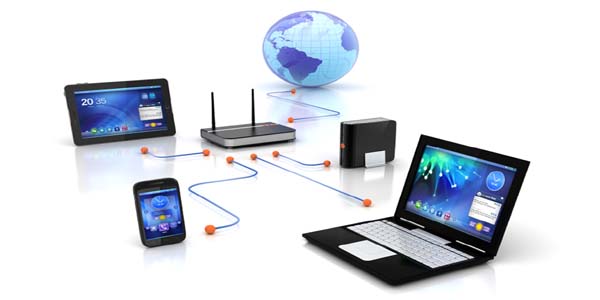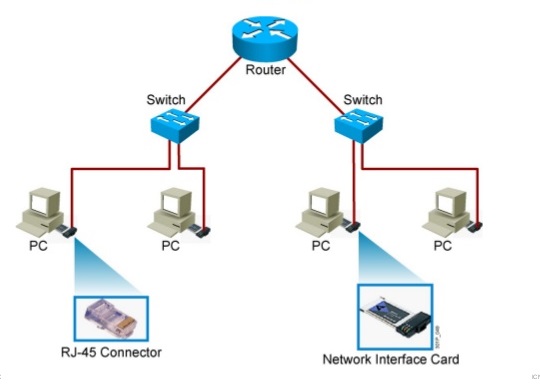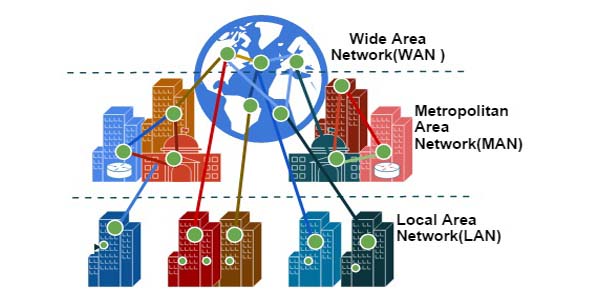Computer Networking Basics
Computer networking is a buzzword to the present world. By the virtue of computer networking, the world has become just like a village. So, anyone of the world can communicate with any person of the world within seconds as if they are living in a village. Computer networking does not mean a single element. A lot of networking elements and protocol work behind a computer networking. So, the computer guys who are interested to learn how computer networking works should learn the basic elements and protocol of computer networking. In this article, I will explain some basic networking terms which are frequently used in computer networking. If you are a beginner in computer networking and want to be a network administrator, you should understand these basic networking terms clearly. So, keep reading the rest of this article. I hope, it will be helpful for you.
What Is a Computer Network?
A computer network is nothing but some rules and regulations used to connect computers together. These computers may have at a small distance or large distance. Basically, a computer network is all of the components (Hardware, Cabling, Network Devices and Software) which are involved in connecting computers. The purpose of a computer network is to provide easy access to information or resources so that productivity of network users is increased significantly.

Elements of a Computer Network
Usually, five types of elements are present in a computer network and these elements collectively make a computer network.
- End devices: In a computer network, end devices communicate with each other and share information or resources. End devices can be a computer or a server or a smart phone. The users of a computer network usually use these end devices.
- Medium: With the medium, the end devices are connected with each other for sending or receiving information. The medium between end devices can be a cable or wireless transceiver.
- Network Devices: Network devices are those devices which are placed between end devices to route the information or data of end devices accurately. Common network devices are switch and router.
- Message: Message is the information or data which is sent by the end devices and it travels over the medium.
- Rules: Rules are used to control how messages flow across the whole network.
Common Physical Components of a Network
The common physical components of a computer network are PCs, cable, connector, Hubs, switches and routers. These physical components can be categorized into four major types. These are:
- Personal Computers (PCs): The PCs/personal computers are the end points in a computer network. Computers are responsible for sending and receiving data or information in the network.
- Interconnections: The interconnections are those components which are responsible to carry data from one point to another point in a network. Interconnections can be divided into three categories:
- Network interface card (NIC): It translates the data produced by the computer into a format that can be transmitted over the local network.
- Network media: The data signals which are formatted by network interface card are transmitted one network device to another by the network media. Cables or wireless transceiver is the example of network media.
- Connectors: It provides the connection point for the media.
- Switches: The network switch is the network attachment point to the end devices that means every computer of a network is usually connected with any network switch to communicate with other computers. The network switch does intelligent switching of the data within the local network.
- Routers: The router is one of the most important devices of a computer network. Router stores network information and interconnects different network. It also chooses the best path between networks to send data.

Why Needs Networking?
If we build up a computer network, we can get the following advantages with this network.
- File Sharing: In a computer network, any computer is able to share files with computer. So, from sharing files you can view, modify and copy files stored on a different computer on the network just as easily as if they were stored on your computer.
- Resources Sharing: It is also possible to share network resources such as printers, fax machines, storage devices (HDD, DVD Drives), webcam, scanners, modem and many more devices within a computer network.
- Program Sharing: As like file sharing, it is also possible to share different program in a computer network. For example, if you have the right type of software license such as Antivirus and keep it on the network server, from where it also run to all the network computers.
- Communication: By developing a computer network, you can do an audio or video call and can communicate with others.
What a Network or Internet Can Do For Us?
There are a lot of thing that a network or internet can do for us. Actually, in present world a man cannot go a single day without internet. The advantages of computer network cannot explain within a few words. However, I am giving some examples of internet usage in our daily life.
- Finding a location: Using internet, you can easily find geographic location with Google Map as well as you can find information of any place at any time.
- Watching video: You can now share any video or watch any video in YouTube or any video sharing site using internet. Even you can watch live streaming with internet.
- Listen to radio: Now it is possible to listen online radio using internet.
- Playing real-time online game: It is also possible to play online real-time game with the client using internet.
- Social network: Now you can share your idea, video, photo using social network site. Even you can chat or make a voice call with your friends using social network site.
Types of Computer Network
According to the representation of a network, a computer network can be categorized into four types.
LAN (Local Area network)
LAN stands for local area network. So, if networking devices are connected within a very close geographic area such a floor of a building, a building itself or a campus environment, it is known as LAN. As LAN covers a small geographic area, there may have a few switches, access points and one or two routers. In a LAN, the end devices and network resources remain private and secure from public. With LAN, computers are able to share files, printers and servers.
WAN (Wide Area Network)
WAN stands for wide area network. WAN is used to connect LANs together. Typically, WANs are used when the LANs which will be connected are separated by a large distance. In a WAN, the network resources remain public and can be accessed by any computer. A lot of routers as well as other network devices work together in a WAN.
MAN (Metropolitan Area Network)
MAN stands for metropolitan area network. It is a hybrid network between a LAN and a WAN. In a MAN, multiple LANs are available but they are not placed long distance. Also, at least on WAN connection is present. Easy example of a MAN is an ISP network.
SAN (Storage Area Network)
SAN stands for storage area network. It provides a high-speed infrastructure to move data between storage devices and physical servers. In a SAN, the storage provides virtual HDD to servers and servers reads and writes to this disk through this network.

Intranet, Extranet, Internet and VPN Concept
Intranet
An intranet is basically a network that is local to a company. In other words, users from within this company can find all of their resources without having to go outside of the company. An intranet can include LANs, private WANs and MANs.
Extranet
An extranet is actually an extended intranet network. In an extranet, certain internal services are made available to known external users or external business partners at remote locations.
Internet
An internet is used when unknown external users need to access internal resources in your network. In other words, your company might have a website that sells various products and you want any external users to be able to access this service.
VPN
A virtual private network is a special type of secure network. A VPN is used to provide a secure connection across a public network, such as internet. Extranets typically use a VPN to provide a secure connection between a company and its known external users or offices.
Hosts, Servers and Workstations
Host
In a computer network, host is a device that is connected to a network and sends or receives information on that network. A host can be a server, a workstation, a network printer or any network device such as router or switch.
Server
The server is a special type of computer that contains more than one CPU sockets and multiple cores, more physical memory than a personal computer and huge disk space. The server has special operating system installed that allows it to function as a server. In a computer network, a server is always ready to provide any network service to the network client.
Workstation
The workstation is also known as a client which is just a basic computer. The workstation runs a client operating system such as Windows 7 or Linux. In a computer network, a workstation always takes services from a network server.
Some basic networking terms those are always used in a computer network has been explained in this article. These terms should always have under better understanding to be an expert network administrator. I hope you have read the above networking terms carefully and understood properly. However, if you face any confusion about any networking terms, feel free to discuss in comment or contact with from Contact page. I will try my best to stay with you.
Why not a Cup of COFFEE if the solution?


how to connect branch networking
Hi sanjeev,
Thanks for visiting my website. To connect branch networking, you can use data connectivity with fiber cable if branch network is not so long distance. If branch network are in long distance, you can use site to site VPN connection.
Great Job Brother 🙂
Can you please make a hand written book about MikroTik RouterOS ???????
I think it will be helpful for Network Engineer 🙂
Thanks brother. I have no plan for writing a book but I will try my best to mention all the important topics about MikroTik router in my website and my YouTube channel. Hope, it will be enough helpful for the IT guys who are eager to learn networking as well as MikroTik RouterOS.
thanks ..this site has helped me to understand technology bettar